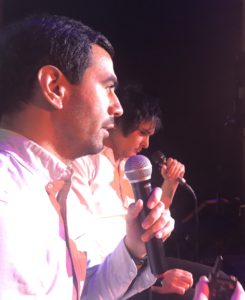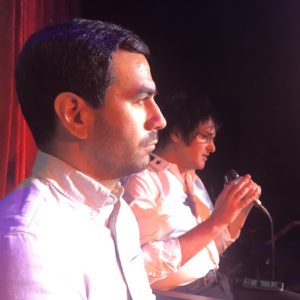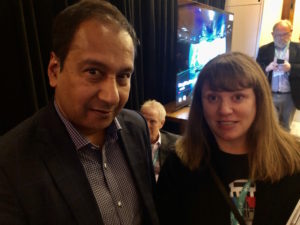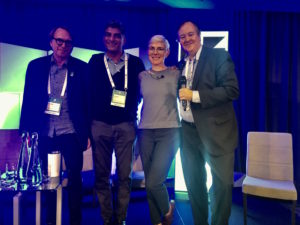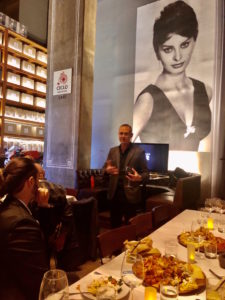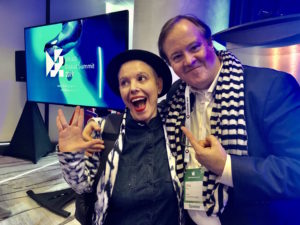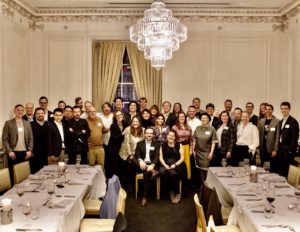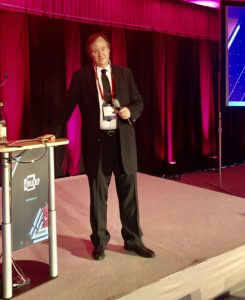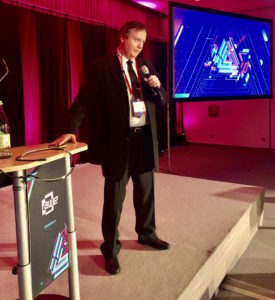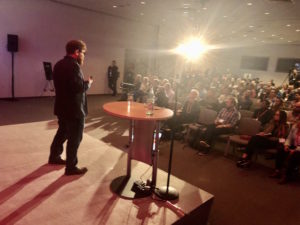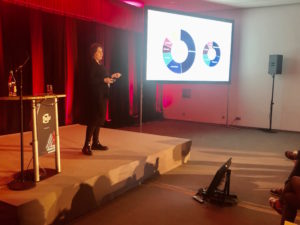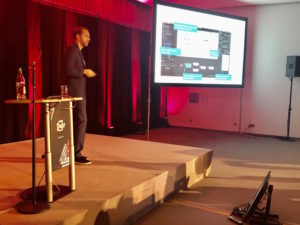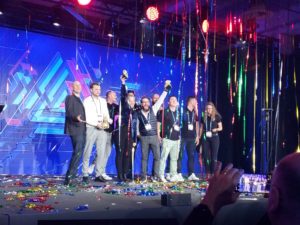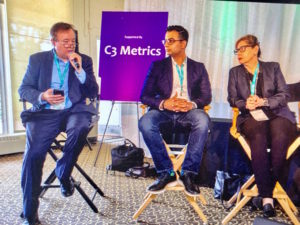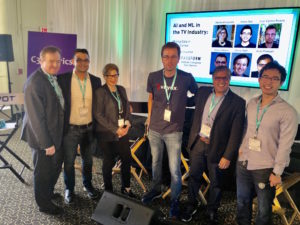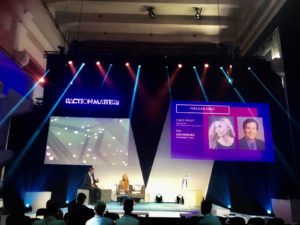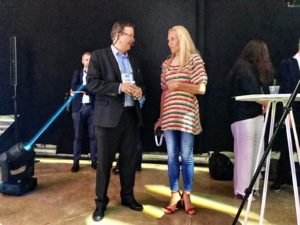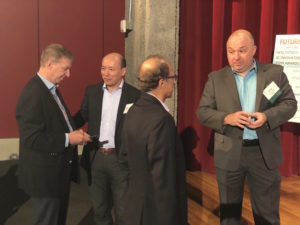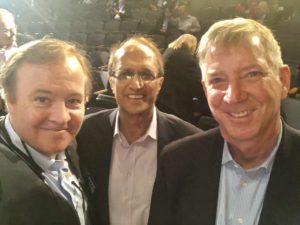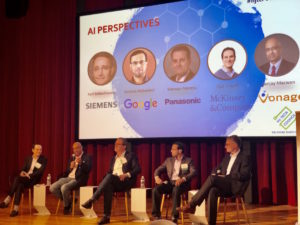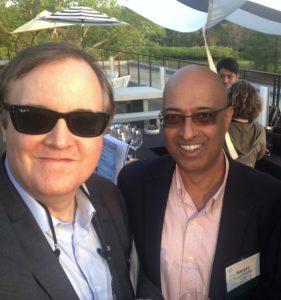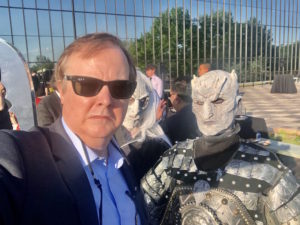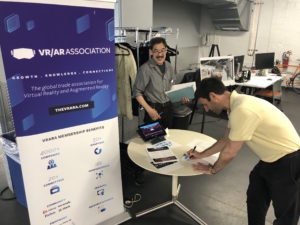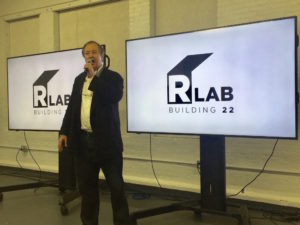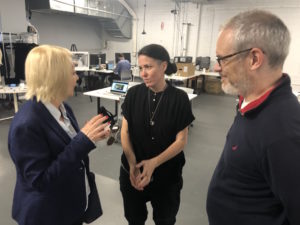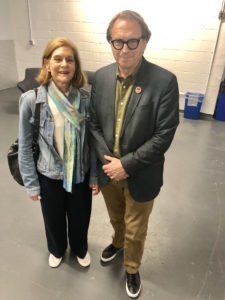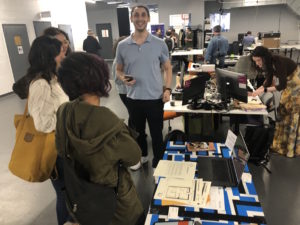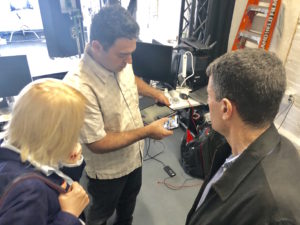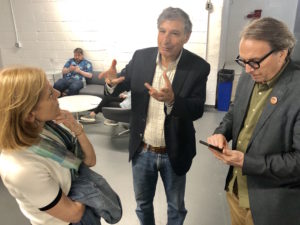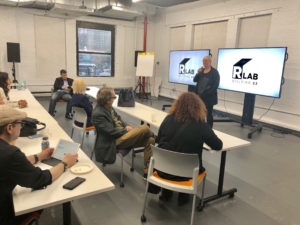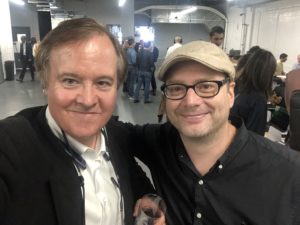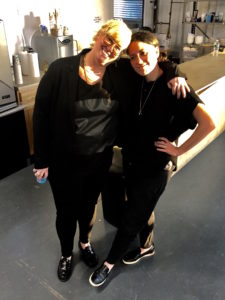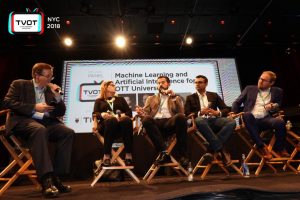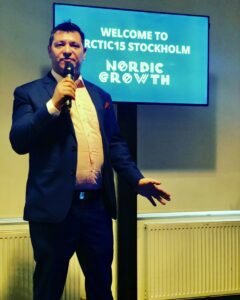
Jan Ameri, CEO of Arctic15, welcomes the crowd on Day 1 of Arctic15 Stockholm 2020
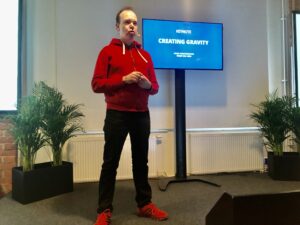
Peter Vesterbacka kicks off the show on Day 1 with a heady talk
Our good friends at Arctic15 held one of the last events in the venture world before lockdown at the Münchenbryggeriet in Stockholm, on February 5th and 6th. The sprawling event space was ideal for making new contacts, and dozens of new investors and start-ups crowded the Deal Room area (a much more commodious and well-lit space than the Cable Factory in Helsinki). This was the first legitimate Arctic15 event in Stockholm, and the likes of Industrifonden, Northzone, Bonnier Ventures, Ericsson Ventures, Luminar Ventures, Creandum and GP Bullhound, among other reputable Swedish investors, welcomed founders and investors alike at their stands facing massive windows overlooking a surprisingly sunny Stockholm sky.


Outside, and inside, the Münchenbryggeriet
Chris Pfaff chaired the Media Revolution track on Day 1, which included a fireside chat with Arctic15 CEO Jan Ameri and the legendary Tommy Palm (Candy Crush Saga, King Digital Entertainment, Resolution Games), a panel moderated by Pfaff, with Harri Manninen, Finnish gaming legend and founding partner of Play Ventures, and Joakim Dal, partner at GP Bullhound. The panel, ‘How Gaming Will Dominate the Entertainment Industry in the 2020s,’ can be heard at:


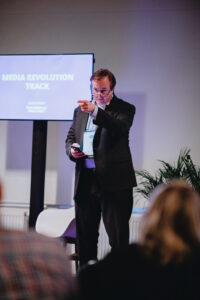
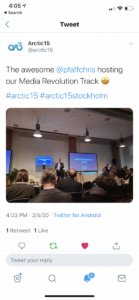
Chris Pfaff introduces the Media Revolution Track at Arctic15 Stockholm 2020
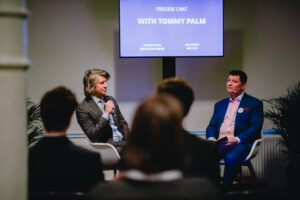
Tommy Palm (left) discusses gaming with Jan Ameri

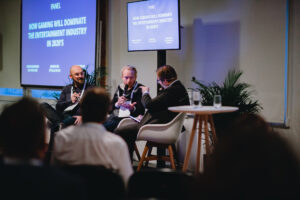
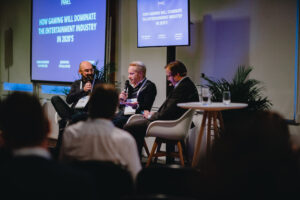
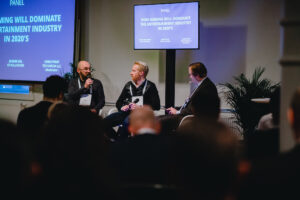
Harri Manninen (left), from Play Ventures, Joakim Dal (center), from GP Bullhound, and Chris Pfaff (right), from Chris Pfaff Tech Media LLC, discuss ‘How Gaming Will Dominate the Entertainment Industry in the 2020s’
Other sessions on the track included a showcase demo of Playpilot by founder/CEO David Mühle; a keynote – ‘Scale 10X like a Mobile Game Company’ – by Sonja Ängeslevä, product lead for Zynga; a fireside chat with Epidemic Sound founder/CEO Oscar Höglund and Staffan Helgesson, general partner at Creandum, and a rousing fireside chat to finish, with Jan Ameri and Yamba founder/CEO John Zerihoun.
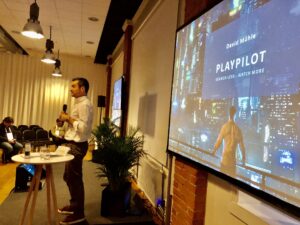
David Mühle, founder/CEO of Playpilot, demonstrates the service on Day 1 of Arctic15 Stockholm

Sonja Ängeslevä, product lead for Zynga, gives a keynote – ‘Scale 10X Like a Mobile Game Company’ – on Day 1 or Arctic15 Stockholm 2020
Pfaff moderated a panel on Day2, ‘Journeys of AI & ML startups in the Nordics’ with Anna Holmquist, founder/CEO of Gazzine; Arash Pendari, founder/creative director of Vionlabs; Jonna Ekman, marketing director at Storykit, and Jonathan Selbie, CEO at Univrses.
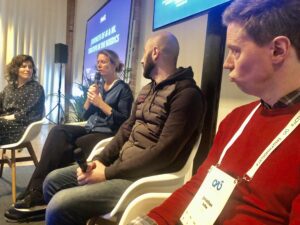
Anna Holmquist, from Gazzine (with microphone), discusses her journey to AI
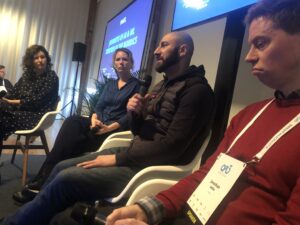
Arash Pendari (with microphone) discusses Vionlabs’ work with leading operators
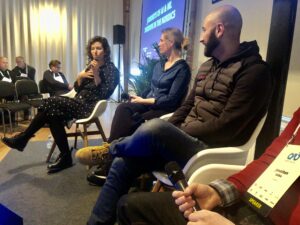
Jonna Ekman (with microphone) explains Storykit’s value proposition
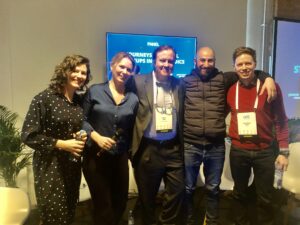
The panel, left to right: Jonna Ekman, Anna Holmquist, Chris Pfaff, Arash Pendari, Jonathan Selbie
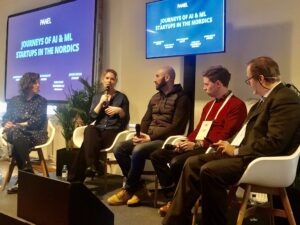
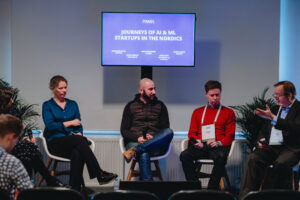
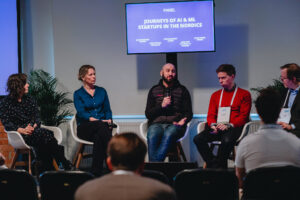
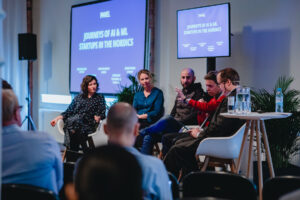
Jonna Ekman (far left), from Storykit; Anna Holmquist, from Gazzine (second from left), Arash Pendari (center), from Vionlabs, Jonathan Selbie, from Univrses (2nd from right), and Chris Pfaff (far right), from Chris Pfaff Tech Media LLC
With a reception at Stockholm City Hall, and a grand tour of the historic building on Night 1 and a fabulous dinner at Stockholm Fisk, hosted by Epistemic VC and Northzone on Night 2, Arctic15 closed out another strong event in high fashion.
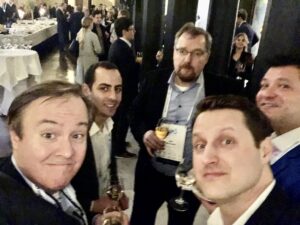
The scene at Stockholm City Hall, with (left to right) Chris Pfaff, Jordan Shapiro, VP, IonQ; Jari Mieskonen, managing partner, Conor Venture Partners; Henrik Keinonen, head of partnerships, gaming/XR/blockchain, from NewCoHelsinki/City of Helsinki, and Jan Ameri, CEO of Arctic15
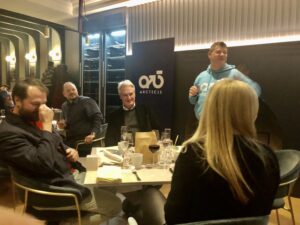
Jan Ameri (standing) addresses the crowd at Stockholm Fisk

Chris Pfaff and Peter Vesterbacka discuss the “FinEst Bay” concept of connecting Helsinki and Tallinn via tunnel
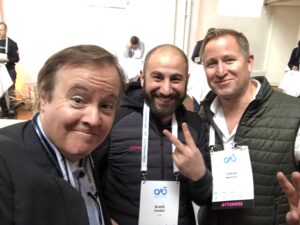
Chris Pfaff, Arash Pendari, and Tomas Bennich on Day 1 of Arctic15 Stockholm 2020


